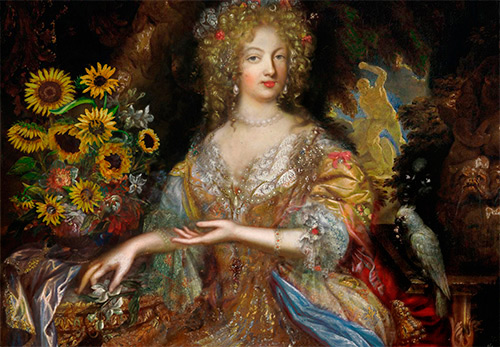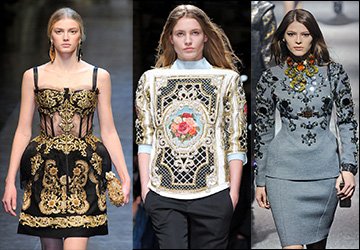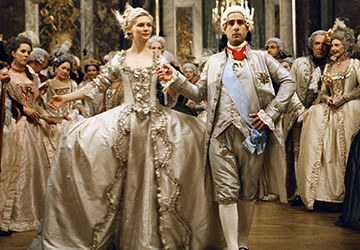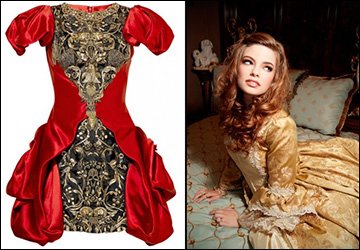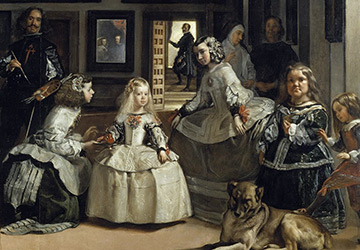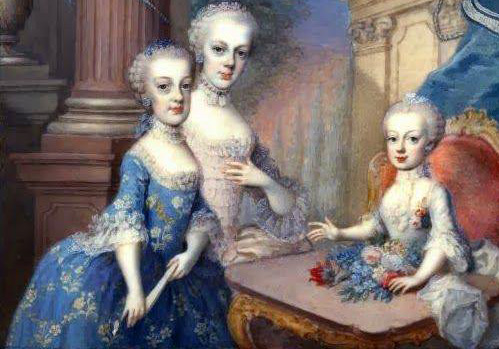Fashion history
Baroque hairstyles from the time of Louis XIV
The state is me.
Louis XIV
"The Sun King" - this is what the French called their King Louis XIV of the Bourbon dynasty. Louis became King of France in 1643, when he was not yet five years old. The king's mother, Anna of Austria, was appointed regent for her son. The father of Louis XIV was Louis XIII, well known to all of us from the book by A. Dumas "The Three Musketeers".
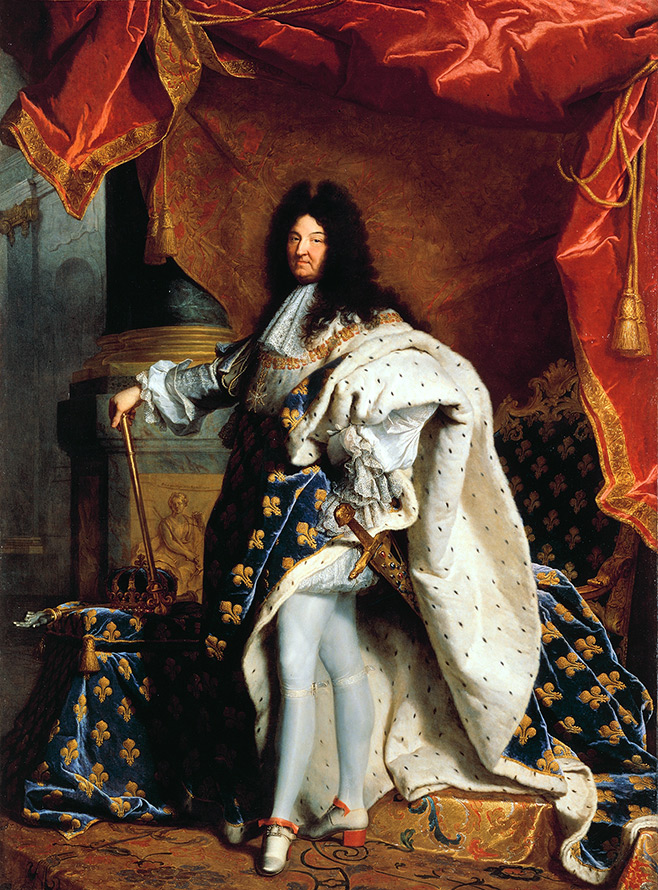
Hyacinth Rigaud. Portrait of Louis XIV. 1701
In a wig.
The reign of Louis XIV was also mentioned more than once in many literary works, and became a platform for the development of plots in cinema. For example, at the beginning of the twentieth century, a series of novels about Angelica (by Anne and Serge Golon) was published, which tell not only about the fate of the main character, but also about the very era of the reign of the “sun king”.
XVII century, and this is the time of Louis XIV, the period of domination in art baroque style... To understand what baroque is, just go to the opera. Baroque is an excessive luxury, huge size, heavy and expensive materials. Baroque is the style of palaces. Time for feasts and unbridled fun.
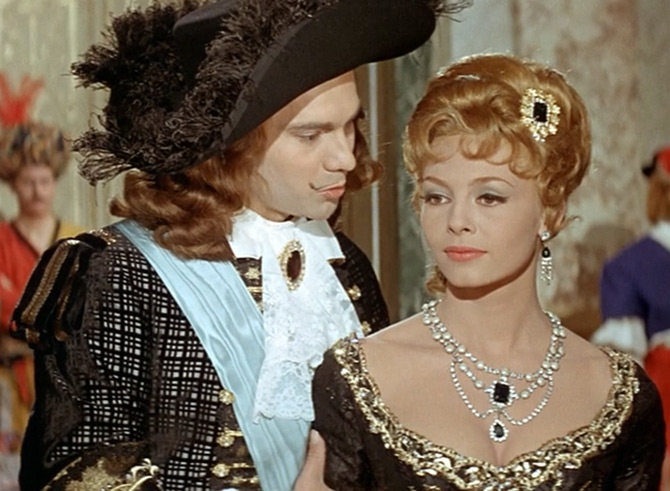
Shot from the film "Angelica and the King"
17th century hairstyles
The same is true about appearance - the most graceful outfits, expensive jewelry, an abundance of cosmetics, both for men and women. During the Baroque period, men began to wear ruffles and bows, as well as stockings. The silhouette of a man's suit has never been so feminine, and the need to take care of your appearance using lipstick, powder and perfume has not been so obligatory for men. Ladies' dresses are getting wider, and their necklines are getting deeper. Hairstyles grow in size, and the number of decorations in them goes beyond all limits of decency. In the 17th century, wigs began to be worn again.
Baroque hairstyles for men
In the first decades of the 17th century, short haircuts were still in fashion, which came from Spain and arose in connection with the fashion for high collars (collar-cutter).
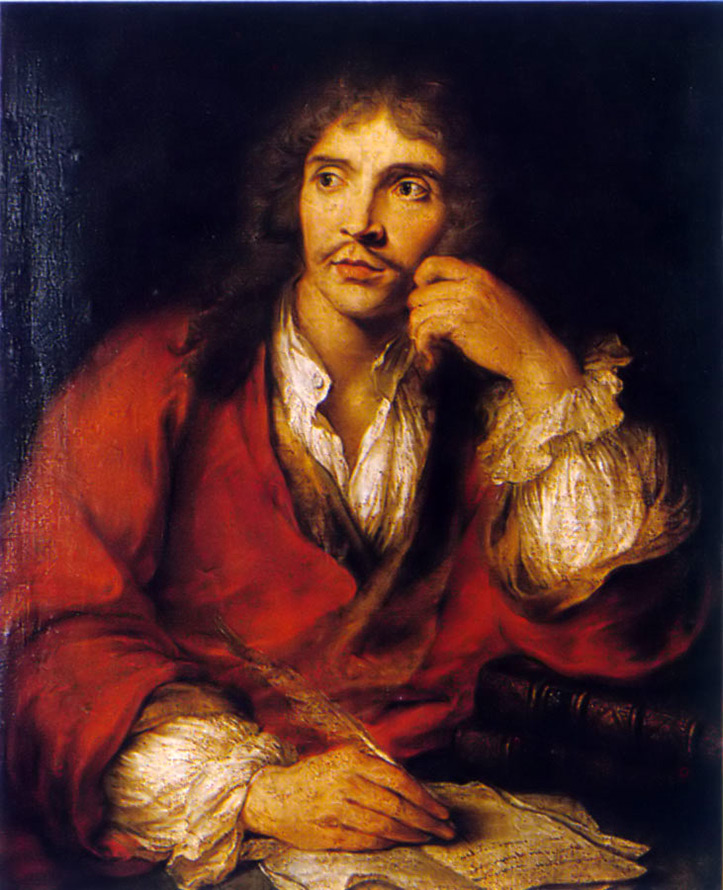
Charles Antoine Coypel. Portrait of Moliere.
A hairstyle of long curled hair and a "Chevalier" mustache - in the form of a narrow strip above the upper lip, the ends of the mustache curled.
However, already in the 20-30s of the 17th century, hairstyles from long hair came into fashion - the hair is curled, tied with bows. This was due, among other things, to the appearance of turn-down collars. The kind worn by the musketeers. For example, hairstyle "a la cadenette". The hairstyle was named in honor of the Duke of Lorraine Cadenett. It consisted of hair cut by a "ladder", exactly divided into two parts. And on the left side was tied a thin pigtail, decorated with a bow and jewelry. Plus, a small, even bang fell on the forehead. However, the hairstyles of the times of Louis XIII are remembered by everyone who watched The Three Musketeers.
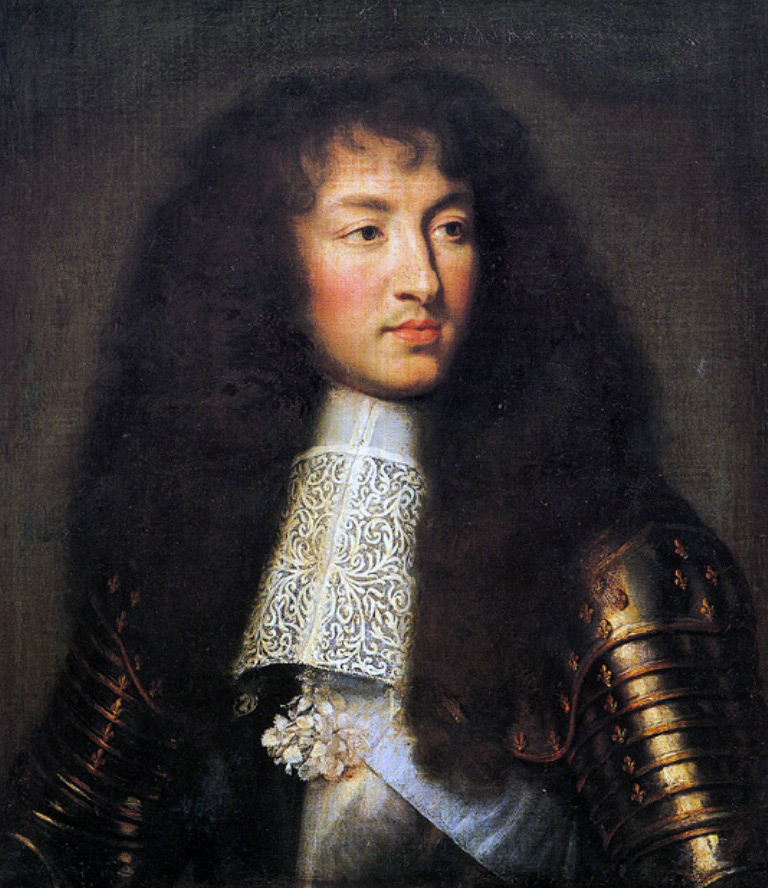
Charles Lebrun - King Louis XIV in his youth - portrait painted in 1661
In the days of Louis XIV, men will also wear hairstyles from long hair and decorate them with bows, but with one significant difference - these will no longer be hairstyles from their own hair, but hairstyles on wigs. It is believed that the fashion for wigs was introduced by Louis XIV in connection with one very annoying fact - the monarch became bald. After that, both Louis himself and the courtiers began to wear wigs.
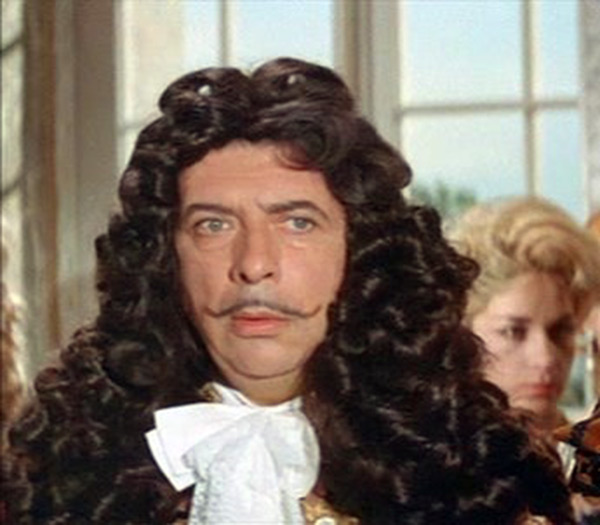
Shot from the film "Angelica and the King"
Chevalier wig and mustache
The wigs were fluffy and curled. The creation of wigs was made possible thanks to the invention of the royal physician Hervé - a method of attaching hair to a small cap covered with a fine silk net. Natural hair wigs were considered the most expensive. Hair for wigs could be sold either by beggars or by prisoners whose hair (provided it was good) was forcibly cut. Wigs with blond curls were highly prized. At one time, only members of the royal family could wear them.Hence, the fashion appeared to lighten, namely to sprinkle powder on wigs of other colors. France traded its wigs. French wigs were also bought at the Russian court. By the way, income from the sale of wigs was a significant item in the treasury of France.
Baroque hairstyles for women
In addition to men's wigs, there were also women's wigs. However, ladies still more often did their hairstyles from their hair, only adding fake curls.
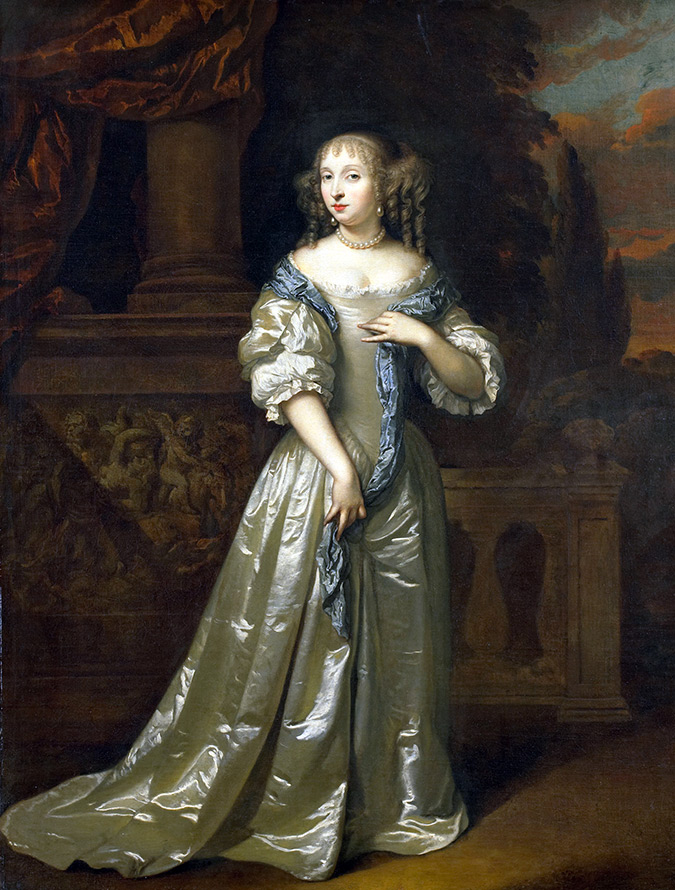
Dutch artist Kaspar Netscher. Portrait of Lady Philippe Staunton, 1668.
Hairstyle similar to Madame Sevigne's
During the period when Louis XIV was still a child, women's hairstyles were similar to those of children. For example, the "al-anfan" ("childish") hairstyle was in vogue, consisting of curled locks tied with a ribbon around the head.
Also in the middle of the 17th century, the Marquise Sevigne's hairstyle was popular - curled hair gathered in buns around the head. The "fireworks" hairstyle, which was introduced into fashion by Queen Anne of Austria, - the front hair was laid flat, and at the back it was gathered in a massive bun, serpentine and corkscrew curls descended on the shoulders.
In the 60s of the 17th century, they wore the "Maria Mancini" hairstyle. The hairstyle was named after an Italian noble lady. It consisted of two hemispheres of hair curled in small locks laid over the ears. The Yurlyu-berlu hairstyle, which was popular in the 70s of the 17th century, was also very similar in silhouette to the Maria Mancini's hairstyle. Its authorship belongs to the first woman-hairdresser known in history Martina.
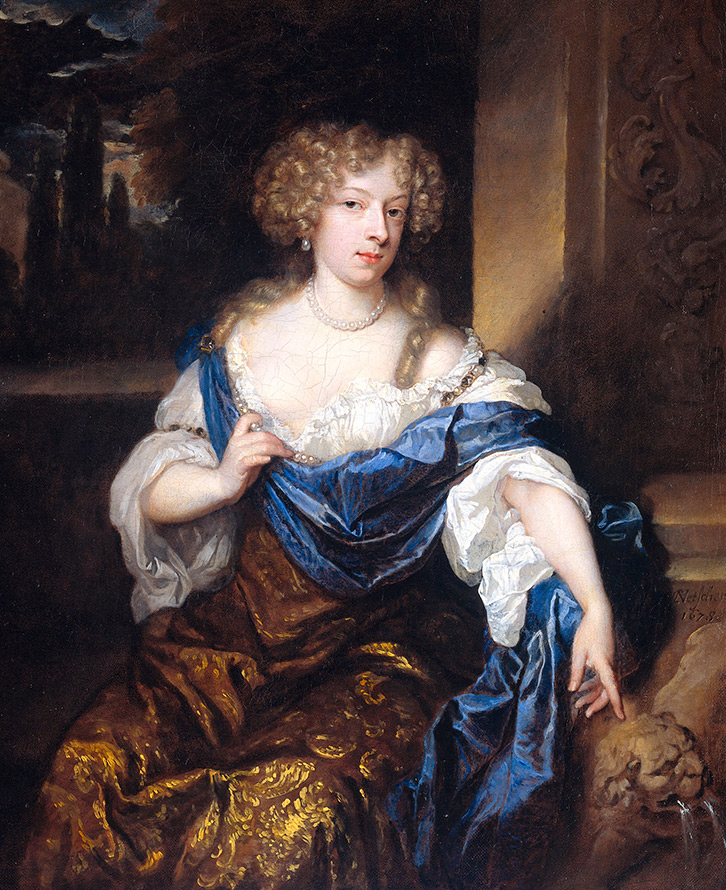
Dutch artist Kaspar Netscher. Elena Catarina de Witte, 1678
Hairstyle "yurlyu-berlyu"
But the most popular hairstyle was the fountain hairstyle. According to legend, this hairstyle was invented by the favorite of Louis XIV, Angelica de Fontanges. Her hairstyle was disheveled during the hunt, and she simply tied her hair with a jeweled garter in a high bun at the top of her head. Louis XIV was delighted with this hairstyle and complimented Angelica. After that, all the ladies of the court began to decorate their heads in this way. The fountain hairstyle had many options - its main feature is height (curled curls arranged in horizontal rows above the forehead) and many decorations. There was also a headdress of the same name - a high cap "fountain".
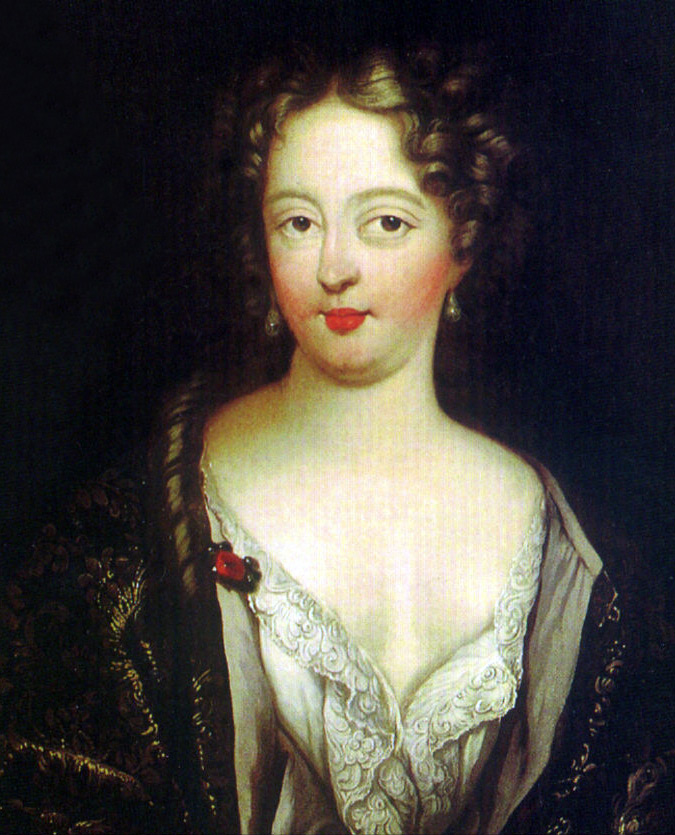
Maria Angelica de Fontanges
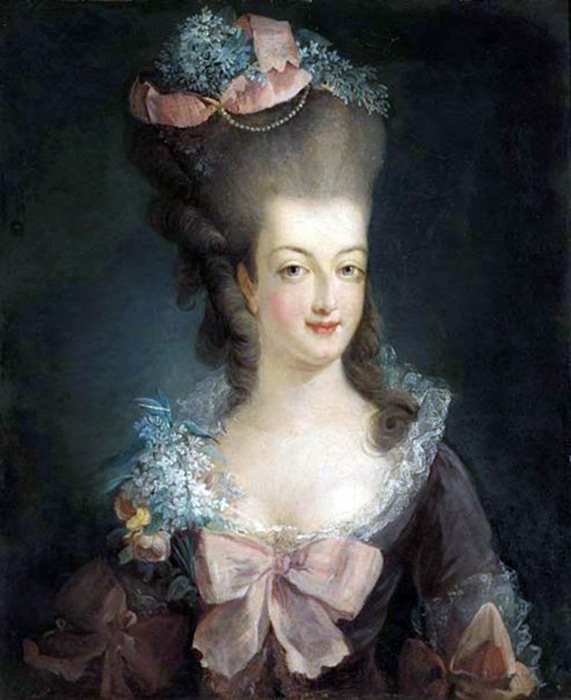
Portrait of Queen Marie Antoinette of France. Fountain hairstyle.
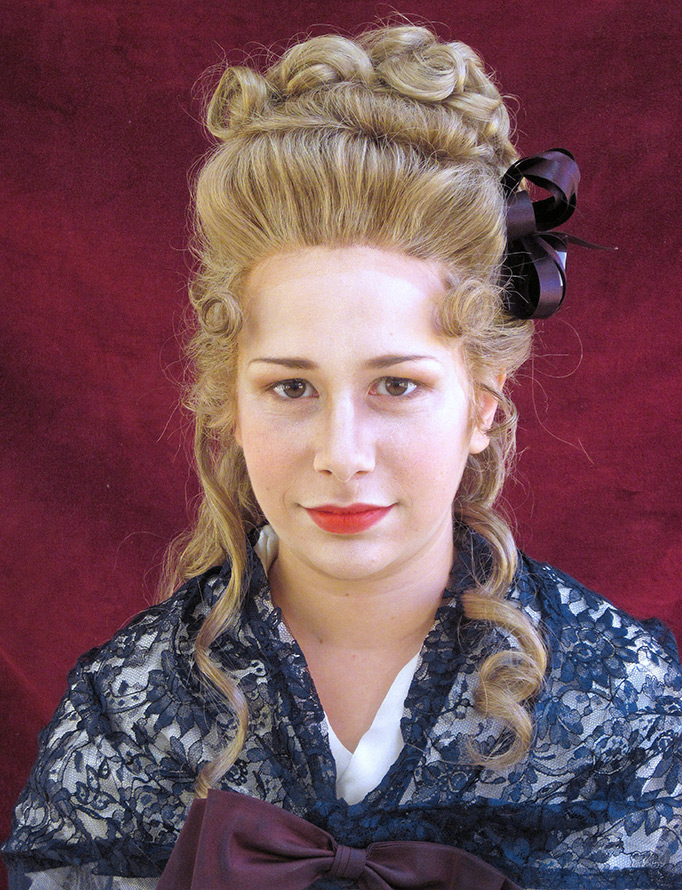
Hairstyle "fountain"
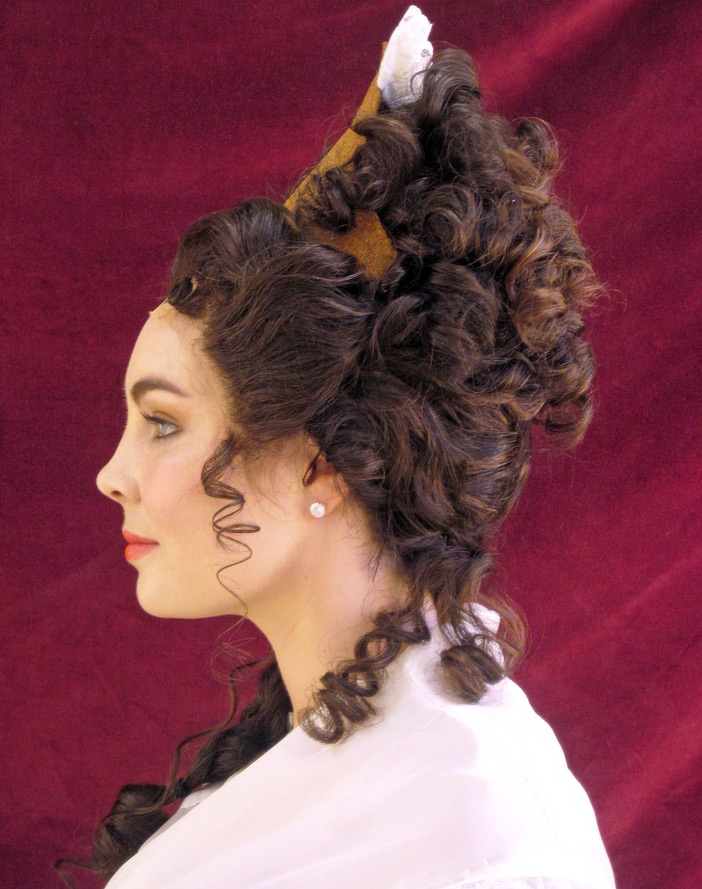
In the last years of the reign of Louis XIV, women's hairstyles became more modest. The "humility" hairstyle comes into vogue - smoothly combed hair with a bun at the back of the head.
In the 17th century, France became a trendsetter. The French court begins to dictate fashion for all the royal courts of Europe. And Paris, as the capital of France, having become the capital of fashion in the 17th century, does not lose its title to this day.
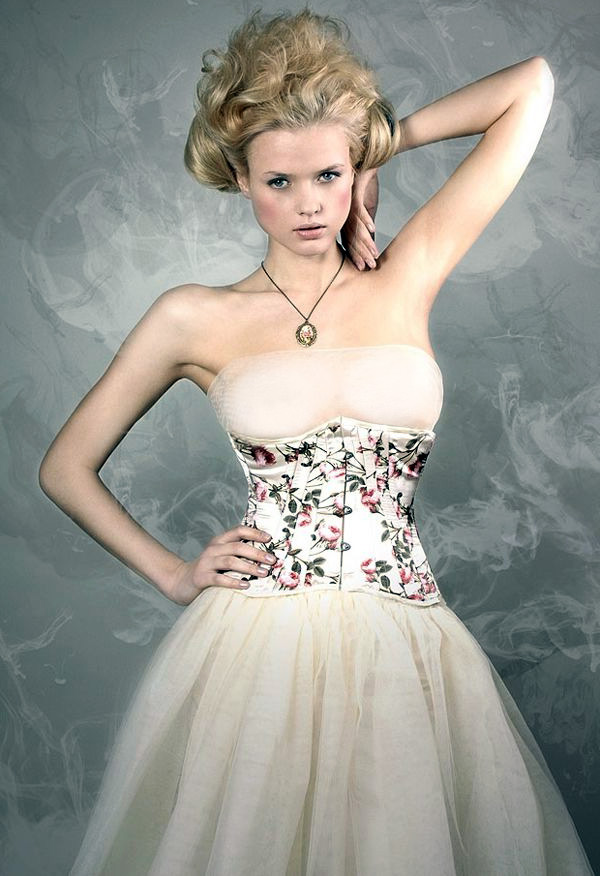
Veronica D.
Comments and Reviews
Add a comment
Rating news
Shades of clothing that make women look younger
What shades of hair make women younger: rules and photos
Funny wedding dresses - photos and ideas
12 most expensive down jackets for the winter
How to look 25 at 40: tips from supermodels
Beautiful schoolgirls
Anti-aging haircuts and hairstyles for women
Fashionable skirts for autumn and winter
Fashionable women's trousers for the cold season
Fashionable and stylish sandals for summer 2024
Spring-summer 2024
 Fashionable dresses and tops with thin spaghetti straps
Fashionable dresses and tops with thin spaghetti straps
 Bandana tops: how to wear stylishly and beautifully
Bandana tops: how to wear stylishly and beautifully
 How to put together the perfect men's wardrobe for the summer
How to put together the perfect men's wardrobe for the summer
 Trendy shorts for spring-summer 2024
Trendy shorts for spring-summer 2024
 Fashionable skirts for spring-summer 2024: a guide to online shopping
Fashionable skirts for spring-summer 2024: a guide to online shopping
 The most fashionable dresses spring-summer 2024: styles and colors
The most fashionable dresses spring-summer 2024: styles and colors
 Fashionable total look 2024: image ideas and trends
Fashionable total look 2024: image ideas and trends
